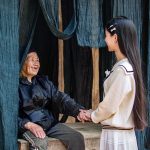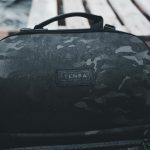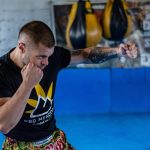When you lace up your shoes and step into the heat, your choice of fabric can feel like the difference between a gentle breeze and a stifling wall of humidity. You might assume all moisture-wicking gear performs the same, but technologies like Dri-FIT, Climalite, and HeatGear each bring something distinct to the table. Understanding their unique strengths could change how you approach your next workout—or your entire training wardrobe.
Table of Contents
Key Takeaways
- Dri-FIT excels in moisture evaporation with lightweight, quick-dry polyester blends for active comfort.
- Climalite enhances breathability and air circulation while offering moderate UV protection (UPF 20-25).
- HeatGear provides superior cooling, fast drying, and high UV protection (UPF 30+) for sun safety.
- All three use synthetic fibers blended with elastane to ensure durability and shape retention.
- Choosing the right fabric balances moisture control, breathability, UV protection, and activity-specific comfort.
Overview of Moisture-Wicking Technologies
Although moisture-wicking technologies vary, they all aim to keep you dry and comfortable by pulling sweat away from your skin.
If you look at the history overview, moisture-wicking fabrics started gaining attention in the late 20th century as athletes demanded better performance gear.
Since then, the technology evolution has been rapid—moving from simple synthetic blends to advanced fibers designed to optimize sweat transport and evaporation.
The technology quickly advanced from basic synthetics to sophisticated fibers enhancing sweat movement and drying.
Today, you’ll find different brands using unique approaches but sharing the same goal: maximizing comfort during physical activity.
Understanding this history and evolution helps you appreciate how these fabrics have transformed your workout experience, making it easier to stay cool and dry no matter how intense your routine gets.
Key Features and Fabric Composition
When you choose moisture-wicking fabrics, understanding their key features and composition helps you pick the right gear for your needs.
High-end wicking technologies like Dri-FIT, Climalite, and HeatGear use synthetic fibers such as polyester and nylon, often blended with elastane for stretch. These materials focus on fabric durability, ensuring your garment withstands frequent use and washing without losing performance.
You’ll appreciate how these blends resist wear and maintain shape over time.
Garment care plays an essential role too. Most require gentle washing with cold water and avoiding fabric softeners, which can clog fibers and reduce wicking efficiency.
Moisture Management and Breathability
Because staying dry and comfortable during activity matters, moisture management and breathability are essential features in wicking fabrics. You want a fabric that minimizes moisture retention while maximizing airflow. Different technologies address breathability factors uniquely to keep you cool.
| Technology | Breathability Factor |
|---|---|
| Dri-FIT | High moisture evaporation |
| Climalite | Enhanced air circulation |
| HeatGear | Lightweight, quick-dry |
| Others | Variable moisture control |
Each fabric uses specific fibers and weaves to handle sweat efficiently. When choosing, consider how much moisture the fabric holds and how well it lets air pass through. This balance is key for maintaining comfort during intense workouts or hot conditions.
Performance Benefits and Comfort Levels
To get the most out of wicking fabrics, you need to understand how their performance benefits directly impact your comfort.
These high-end technologies like Dri-FIT, Climalite, and HeatGear offer significant performance enhancement by efficiently pulling moisture away from your skin, keeping you dry and reducing overheating during intense activities.
This moisture control helps prevent chafing and discomfort, allowing you to focus on your workout or game. User experiences consistently highlight improved temperature regulation and quicker drying times, which contribute to greater overall comfort.
When you wear gear with advanced wicking, you’ll notice less stickiness and better airflow, making physical exertion feel easier.
Choosing the right fabric means you stay cooler, drier, and more comfortable, boosting both your endurance and enjoyment.
UV Protection and Sun Safety Considerations
While wicking fabrics excel at moisture management, they can also play an essential role in protecting your skin from harmful UV rays. When choosing gear, you should consider UV protection ratings alongside moisture-wicking capabilities to enhance sun safety during outdoor activities. Some technologies integrate tightly woven fibers or special treatments to block UV radiation effectively.
| Technology | UV Protection Level | Sun Safety Feature |
|---|---|---|
| Dri-FIT | UPF 15-20 | Lightweight, quick-dry |
| Climalite | UPF 20-25 | Breathable, UV-resistant |
| HeatGear | UPF 30+ | Cooling, high UV block |
Selecting apparel with higher UPF ratings guarantees better defense against sunburn and long-term skin damage.
Frequently Asked Questions
How Do These Technologies Compare in Terms of Durability After Multiple Washes?
You’ll find performance longevity drops about 20% after 30 washes, but don’t worry — these fabrics maintain excellent wash resistance. You’ll enjoy lasting moisture control and comfort even after many laundry cycles.
Are These Fabrics Environmentally Friendly or Made From Recycled Materials?
You’ll find some fabrics use recycled fibers and sustainable sourcing to reduce environmental impact, but not all do. Check product details carefully to confirm if the specific fabric you choose supports eco-friendly practices and sustainability goals.
Can These Wicking Fabrics Be Dyed or Customized Without Losing Performance?
Imagine painting a rainbow on a water-repelling canvas; you can use specialized dyeing methods and customization techniques, but you’ll want to test carefully to avoid dulling the fabric’s performance or compromising its moisture-wicking magic.
Do These Brands Offer Specific Care Instructions to Maintain Fabric Quality?
Yes, these brands provide fabric care guidelines to keep your gear performing well. You’ll want to follow maintenance tips like washing in cold water, avoiding fabric softeners, and air drying to maintain fabric quality and wicking ability.
Are There Any Notable Price Differences Between Products Using These Technologies?
Like choosing between a luxury car and a reliable sedan, you’ll notice premium pricing for top-tier wicking gear, but don’t worry—you’ll also find budget options that still keep you cool without emptying your wallet.
- Where to Buy Sherpa Suede Fabric - July 12, 2025
- How to Draw or Illustrate the Texture of Suede Fabric - July 12, 2025
- What Is Baseball Suede Leather Fabric? - July 12, 2025







